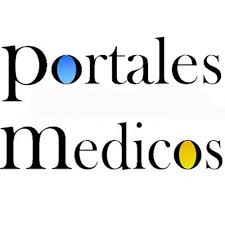Conductas alimentarias de riesgo en estudiantes universitarios venezolanos: prevalencia en la ciudad de caracas, 2020
Risky eating behaviors in venezuelan university students: prevalence in caracas city, 2020
Resumen
El objetivo de esta investigación fue analizar la prevalencia de conductas alimentarias de riesgo para el desarrollo de trastornos del comportamiento alimentario (TCA) en estudiantes universitarios de Caracas durante el inicio del año 2020. La investigación fue de tipo analítica, diseño no experimental y transeccional. La muestra fue N = 357 (Nfem = 59,4%; Nmas = 40,6%), M = 21,4 años y D.T. = 1,88 de seis (6) universidades y diferentes áreas de conocimiento. La investigación fue de tipo no experimental-transeccional, y descriptiva. Se administró el instrumento Eating Attitudes Test-26 (EAT-26) (α = 0,859). Encontramos un factor de riesgo (Si-TCA ≥ 20, N = 45) de 12,61% para el total de la muestra. Se utilizaron las pruebas de Mann-Whittney y Kruskal-Wallis, sin diferencias estadísticamente significativas en el EAT-26 en los grupos de hombres y mujeres, diferencias entre áreas de conocimiento a favor de las Ciencias Económicas y Administrativas, pero no entre factores del instrumento (Dieta, Bulimia, Control Oral) considerando el género. Se observaron mayores porcentajes de tendencia TCA en dos de las instituciones (UNIMET: 3,92%, UCAB: 3,36% para la muestra total, 31,11% y 26,67% para el grupo Si-TCA) y en estudiantes de Ciencias Económicas y Administrativas (6,44% para la muestra total y 51,11% para el grupo Si-TCA). Los resultados sugieren que la prevalencia de conductas de riesgo es levemente superior a lo esperado y evidencia la necesidad de nuevos estudios epidemiológicos para estudiar la variable en estudiantes universitarios venezolanos.
The aim of this research was to analyze the prevalence of risk eating behaviors for eating disorders (ED) in university students from Caracas beginning 2020. The sample was N = 357 (Nfem = 59,4%; Nmal = 40,6%), M = 21,4 years-old and S.D. = 1,88 from six (6) universities and different areas of knowledge. The research was non-experimental-transectional, and descriptive. The Eating Attitudes Test-26 (EAT-26) instrument (α = 0,859) was administered. We found a risk factor (Si-ACT ≥ 20, N = 45) of 12,61% for the total sample. The Mann-Whittney and Kruskal-Wallis tests were used, without statistically significant differences in the EAT-26 in the groups of men and women, differences between areas of knowledge in favor of Economic and Administrative Sciences, but not between factors of the instrument (Diet, Bulimia, Oral Control) considering gender. Higher percentages of TCA trend were observed in two of the institutions (UNIMET: 3,92%, UCAB: 3,36% for the total sample, 31,11% and 26,67% for the Si-TCA group) and in Economic and Administrative Sciences students (6,44% for the total sample and 51,11% for the Si-TCA group). The results suggest that the prevalence of risk behaviors is slightly higher than expected and shows the need for new epidemiological studies to study the variable in Venezuelan university students.
Palabras clave
Referencias
Associació contra l´Anorèxia i la Bulímia, ACAB (2004). Trastornos de la conducta alimentaria. Estudio socio-epidemiológico de población juvenil catalana. Barcelona: Fundación WAE. http://www.acab.org/es/publicaciones/estudios-y-informes
American Psychiatric Association (2013). Diagnostic and Statistical Manual of Mental Disorders (5ta. Ed.). Washington: APA.
Banasiak, S., Wertheim, E., Koerner, J. y Voudouris, N. (2001). Test-retest reliability and internal consistency of a variety of measures of dietary restraint and body concerns in a sample of adolescents girls. International Journal of Eating Disorders, 29, 85-89. https://www.ncbi.nlm.nih.gov/pubmed/11135339.
Bello, N. y Di Bella, C. (1996). Anorexia y Bulimia Nerviosa. Trabajo de Grado de Licenciatura no publicado. Universidad Católica Andrés Bello, Caracas. http://biblioteca2.ucab.edu.ve/anexos/biblioteca/marc/texto/AAL7293_1.pdf
Benítez, A., Sánchez, S., Bermejo, M., Franco, L., García-Herráiz, M. y Cubero, J. (2019). Análisis del riesgo de sufrir Trastornos Alimentarios en jóvenes universitarios de Extremadura (España). Enfermería Global, 54 (2), 124-133. https://revistas.um.es/eglobal/article/view/313421/258081
Berny, M. C., Rodríguez, D., Cisneros, J. y Guzmán, G. (2020). Trastornos de la Conducta Alimentaria. Boletín Científico De La Escuela Superior Atotonilco De Tula, 7(14), 15-21. https://doi.org/10.29057/esat.v7i14.6036
Constaín, G., Ricardo, C., Rodríguez-Gázquez M., Álvarez, M., Marín, C. y Agudelo, C. (2014). Validez y utilidad diagnóstica de la escala EAT-26 para la evaluación del riesgo de trastornos de la conducta alimentaria en población femenina de Medellín, Colombia. Atención Primaria, 46 (6), 283-289. https://www.sciencedirect.com/science/article/pii/S0212656714000134?via%3Dihub.
Carter, P. y Moss, R. (1984). Screening for anorexia and bulimia nervosa in a college population: Problems and limitations. Addictive Behaviors, 9, 417-419. https://www.ncbi.nlm.nih.gov/pubmed/6598003.
Galmiche, M., Déchelotte, P., Lambert, G. y Tavolacci, M. (2019). Prevalence of eating disorders over the 2000–2018 period: a systematic literature review. The American Journal of Clinical Nutrition, 109(5), 1402–1413. https://doi.org/10.1093/ajcn/nqy342
Garner, D. y Garfinkel, P. (1979). The Eating Attitudes Test: An index of the symptoms of anorexia nervosa. Psychological Medicine, 9, 273-279.
Garner, D., Olmsted, M., Bohr, Y. y Garfinkel, P. (1982). The Eating Attitudes Test: psychometric features and clinical correlates. Psychological Medicine, 12, 871-878.
Griffiths, S., Murray, S., Krug, I., y McLean, S. (2018). The contribution of social media to body dissatisfaction, eating disorder symtoms, and anabolic steroid use among sexual minority men. Cyberpsychology, Behavior and Social Networking, 21(3), 149-157. https://www.liebertpub.com/doi/pdfplus/10.1089/cyber.2017.0375
Hernández, R., Fernández, C. y Baptista, M. (2014). Metodología de la investigación (6ta Ed.). México: McGraw-Hill/ Interamericana de Editores.
Hubel, C., Marzi, S., Breen, G. y Bulik, C. (2018). Epigenetics in eating disorders: a systematic review. Molecular Psychiatric, 24, 901-915. https://www.nature.com/articles/s41380-018-0254-7
Hudson, J., Hiripi, E., Pope, H., y Kessler, R. (2007). The Prevalence and Correlates of Eating Disorders in the National Comorbidity Survey Replication. Biological Psychiatric, 61(3), 348-358. https://www.biologicalpsychiatryjournal.com/article/S0006-3223(06)00474-4/fulltext. d.o.i https://doi.org/10.1016/j.biopsych.2006.03.040
Kerlinger, F. y Lee, H. (2002). Investigación del comportamiento. Métodos de investigación en ciencias sociales (4ta. Ed.). México: MacGraw-Hill.
Krebs, P., Dennison, C., Kellar, L. y Lucas, J. (2018). Gender Differences in Eating Disorder Risk among NCAA Division I Cross Country and Track Student-Athletes. Journal of Sport Medicine. D.O.I.: https://doi.org/10.1155/2019/5035871
Landaeta-Jiménez, M., Sifontes, Y. y Herrera, M. (2018). Venezuela entre la inseguridad alimentaria y la malnutrición. Anales Venezolanos de Nutrición, 31(2), 66-77. https://www.analesdenutricion.org.ve/ediciones/2018/2/art-4/
Lisi, R. y Morandini, L. (1995). Anorexia y Bulimia Nerviosa: Prevalencia y características de personalidad asociadas en una muestra de bailarinas del área metropolitana de Caracas. Trabajo de Grado de Licenciatura, Universidad Católica Andrés Bello, Caracas. http://biblioteca2.ucab.edu.ve/anexos/biblioteca/marc/texto/AAE8137_1.pdf
Lugli, Z. y Vivas, E. (2006). Conductas y actitudes sugestivas de riesgo de trastornos del comportamiento alimentario en estudiantes universitarios venezolanos. Revista de la Facultad de Medicina, 29(2), 168-173. http://ve.scielo.org/scielo.php?script=sci_arttextypid=S0798-04692006000200014ylng=esynrm=iso
Madruga, D., Leis, R. y Ferri, N. (2010). Trastornos del comportamiento alimenticio: Anorexia Nerviosa y bulimia Nerviosa. (cap. 7). En Protocolos diagnóstico-terapéuticos de Gastroenterología, Hepatología y Nutrición Pediátrica SEGHNP-AEP https://www.aeped.es/sites/default/files/documentos/anorexia_bulimia.pdf
Makino, M., Tsuboi, K. y Dennerstein, L. (2004). Prevalence of Eating Disorders: A Comparison of Western and Non-Western Countries. Medscape General Medicine, 6(3), 49. https://www.ncbi.nlm.nih.gov/pmc/articles/PMC1435625/
Ministerio del Poder Popular para la Salud. (2014). Protocolos clínicos de atención integral a los y las adolescentes: servicios de primer y segundo nivel de atención. Caracas: Dirección del Programa de Atención a la Madre, Niños, Niñas y Adolescentes. https://www.unicef.org/venezuela/spanish/PROTOCOLOS_ADOLESCENTES_WEB.pdf
Ministerio del Poder Popular para la Salud. (2016). Boletín Epidemiológico, LX (52), 25 al 31 de Diciembre. https://www.ovsalud.org/descargas/publicaciones/documentos-oficiales/Boletin-Epidemiologico-2016.pdf
Peláez, M., Labrador, F. y Raich, R. (2005). Prevalencia de los trastornos de la conducta alimentaria: consideraciones metodológicas. International Journal of Psychology and Psychological Therapy, 5(2), 135-148. file:///C:/Documents%20and%20Settings/Usuario/Mis%20documentos/Downloads/Dialnet-PrevalenciaDeLosTrastornosDeLaConductaAlimentaria-1311490.pdf
Prieto, M. (2018). Estilo de vida en estudiantes de las Facultades de Ciencias Económicas e Ingeniería, Universidad Autónoma del Occidente de Cali. Trabajo Especial de Grado no publicado, Universidad Autónoma de Occidente, Santiago de Cali, Colombia. https://red.uao.edu.co/bitstream/10614/10151/5/T07813.pdf
Prince, R. (1985). The concept of culture-bound syndromes: anorexia nervosa and brain fag. Social Science and Medicine, 21, 197-203. D.O.I.: 10.1016/0277-9536(85)90089-9. https://www.researchgate.net/publication/20741661_The_concept_of_culture-bound_syndromes_Anorexia_Nervosa_and_brain-fag
Quintero, E., Pérez, A., Montiel, C., Pirela, D., Acosta, M. y Pineda, N. (2003). Trastorno de la conducta alimentaría: prevalencia y características clínicas en adolescentes de la ciudad de Maracaibo, Edo. Zulia, Venezuela. Investigación Clínica, 44(3), 179-193. http://www.scielo.org.ve/scielo.php?script=sci_arttextypid=S0535-51332003000300002
Ríos, A., Machado, T., Rísquez, F. y Ortega, M. (1994). Detención de actitudes Sugestivas de Anorexia y Bulimia Nerviosa en estudiantes de 10 a 18 años de edad, del Área Metropolitana de Caracas. Monografia no publicada. Concejo Nacional de Ciencia y Tecnología (Conicit). Caracas.
Reyes-Rodríguez, M., Franko, D., Matos-Lamourt, A., Bulik, C., Von Holle, A., Cámara-Fuentes, L., Rodríguez-Angleró, D., Cervantes-López, S., y Suárez-Torres, A. (2010). Eating Disorder Symptomatology: Prevalence among Latino College Freshmen Students. Journal of Clinical Psychology, 66 (6), 666-679. D.O.I.: 10.1002/jclp.20684.
Rivas, T., Bersabé, R., Jiménez, M. y Berrocal, C., (2010). The Eating Attitudes Test (EAT-26): Reliability and Validity in Spanish Female Samples. The Spanish Journal of Psychology, 13 (2), 1044-1056. https://core.ac.uk/download/pdf/54920801.pdf
Stice, E. y Bohom, C. (2013). Eating disorders. En T. P. Beauchaine y S. P. Hinshaw (Eds). Child and Adolescent Psychopatology (2da Ed.). New Jersey: John Wiley and Sons Inc.
Thomas, J., Khan, S. y Abdulrahman, A. (2010). Eating attitudes and body image concerns among female university students in the United Arab Emirates. Apetite, 54, 595- 598. https://s3.amazonaws.com/academia.edu.documents/44765904/Eating_attitudes_and_body_image_concerns20160415-12519-1lv1tp2.pdf
Vaidyanathan, S., Pooja, K. y Menon, V. (2019). Eating Disorders: An Overview of Indian Research. Indian Journal of Psychological Medicine, 41 (4), 311-317. DOI: 10.4103/IJPSYM.IJPSYM_461_18
Vega, E., Mosquera, Z. y Cubas, F. (2018). Frecuencia de trastornos alimentarios en estudiantes de la escuela de nutrición de la Universidad César Vallejo Lima este, 2017. Scientia Biomédica, 1 (2),69-73. http://181.224.246.204/index.php/UCVSCIENTIABIOMEDICA/article/download/1822/1553
Enlaces refback
- No hay ningún enlace refback.
Depósito Legal Electrónico: ME2016000090
ISSN Electrónico: 2610-797X
DOI: https://doi.org/10.53766/GICOS
| Se encuentra actualmente registrada y aceptada en las siguientes base de datos, directorios e índices: | |||
 | |||
 |  |  |  |
 |  | ||
 |  |  |  |
 |  |  |  |
 |  |  |  |
 |  | ||
![]()
Todos los documentos publicados en esta revista se distribuyen bajo una
Licencia Creative Commons Atribución -No Comercial- Compartir Igual 4.0 Internacional.
Por lo que el envío, procesamiento y publicación de artículos en la revista es totalmente gratuito.

